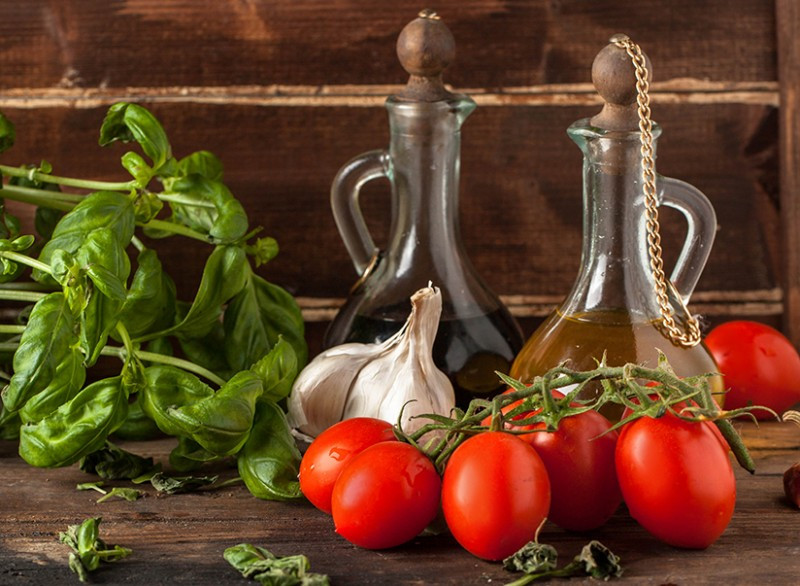Every now and then it makes sense to push back from the dinner table and take a good, hard look at what you are eating. Is what you are putting into your mouth nutritious, and is it conducive to long-term good health? Just think of the benefits if we took such an inventory once a year; like, say, in March, and did something about it. This is National Nutrition Month®, the designated month in which the Academy of Nutrition and Dietetics goes all out to remind us of the benefits of healthy eating. That bowl filled to the brim with a monster helping of chunky chocolate ice cream doused in syrup or that 18-inch triple-thick-crust pizza dripping six types of cheeses off the edge? Think twice, or however many times it takes. This year's theme of National Nutrition Month® is "Put Your Best Fork Forward." Catchy. In some cases, though, it might just be better to put that fork away and instead satisfy that mid-afternoon craving with a handful of assorted nuts or a small bowl of chopped celery and baby carrots. Be nice to your body and recommit to healthy eating habits and fitness. Out with the bad habits, in with the healthy ones. Good nutrition goes with regular physical fitness like, well, peas and carrots. Healthful eating and physical activity are essential in controlling our weight and preventing chronic disease. Eating lots of fruits and vegetables is a step in the right direction. So are avoiding sweets and steering clear of bad carbs.
A Dozen Tips for Improving Your Nutrition Impact
So, are you ready to get refocused on doing, and eating, the right things? It's time to get started. Here are a dozen dandy tips and strategies to help you navigate your way back to the nutrition superhighway—no more March Madness, just March nutrition:- Store healthful foods in the fridge and replenish as necessary. Start with fruits and veggies, but keep in mind many reach their expiration dates quickly. Find creative, tasteful ways to have them ready to go as snacks and to work them into the main course, such as in a soup.
- Don't deprive. Before the temptation for something sweet or otherwise unhealthy gets out of hand and drives you into binging on calories, allow yourself a touch of sinful eating for special events such as celebrations or eating out. Satisfy, don't deprive.
- Eat fish. "Fatty" fish such as salmon might be a tad high on calories, but you more than make up for that with the abundance of omega-3 fatty acids and other nutrients. You also assume a lower risk of developing heart disease, dementia and depression.
- Go with probiotics and fiber. This is good for the gut, as in helping in the fight against obesity. Live yogurt and sauerkraut are good for the probiotics, as are probiotic supplements. The fiber helps our gut bugs do their thing in helping to stave off diseases.
- Emphasize protein. It helps boost metabolism and can reduce cravings, making it especially handy for weight loss.
- Use extra virgin olive oil. It's called "the healthiest fat on the planet" by authoritynutrition.com because it is good for the heart and can reduce inflammation.
- Beware high-sodium food. Such foods not only are detrimental to blood pressure, they can leave you feeling bloated. Canned soups, soy sauce and pizza are among the better-known culprits.
- Pay for groceries with cash or checks, not credit cards. Seriously. The former will make you more discriminating about what you spend your money on and help guard against unhealthy impulsive purchases. Along the same lines, it's best not to shop on an empty stomach.
- Strategize your trip through the buffet line. Walk around it, check everything out, and decide what you are going to get before you grab a plate and get in line. Otherwise, most folks, sight unseen, tend to start filling and piling their plates with stuff they never planned to eat, and then feel obligated to eat it all once they get seated.
- Know the difference between good carbs and bad carbs. Good carbs, for example: whole-wheat pasta, acorn squash and oatmeal. Bad carbs: cakes, crackers and sugary cereals.
- Get green, and go for variety. Mast green veggies, such as spinach and romaine lettuce, are full of nutrients, but think about branching out and mixing in some kale, parsley, arugula, etc. to make things more interesting while keeping those vital nutrients headed your way.
- Drink water daily. In fact, if you get a craving for something unhealthy between meals or late at night, sip your way through a large glass of water, wait a few minutes, then ask yourself if you really are still hungry. This works many times to kill a food impulse that doesn't belong on your plate.

